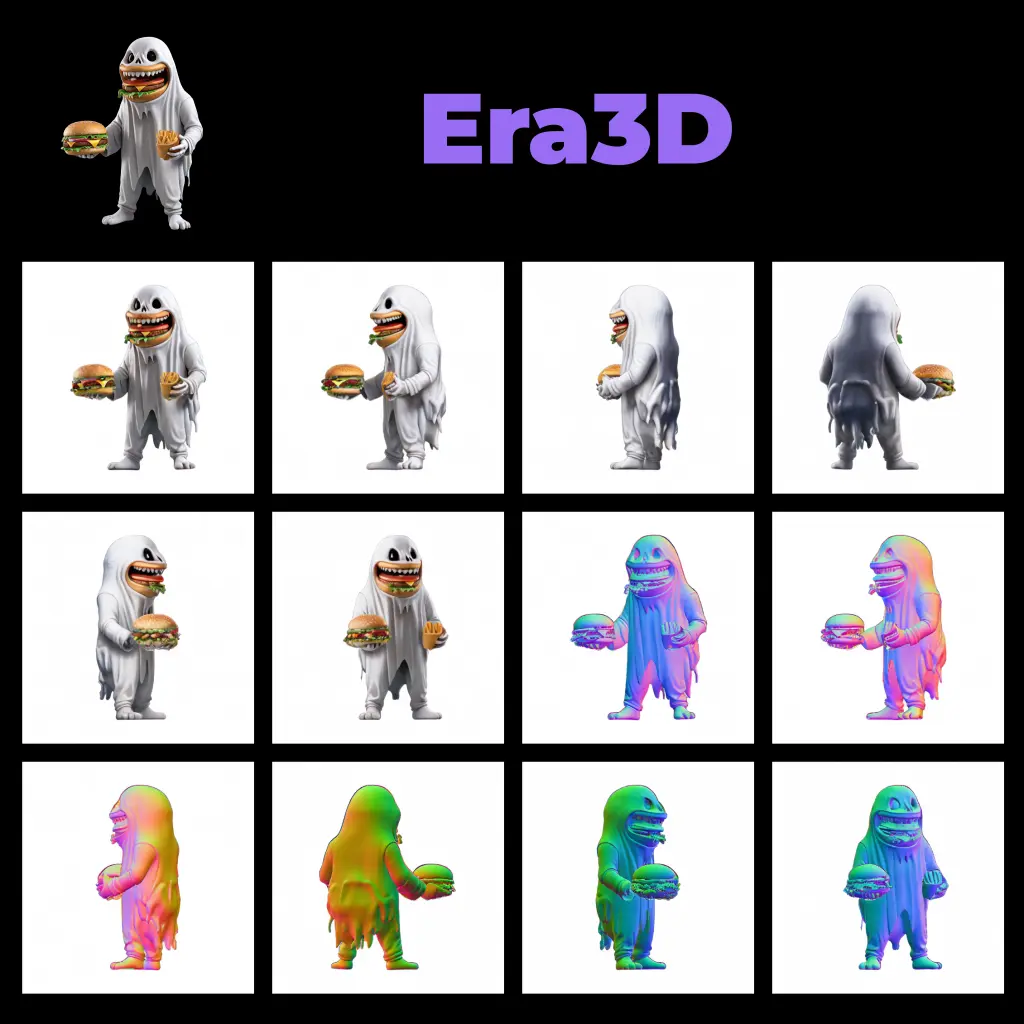ComfyUI Node: Image to Noise
Image to Noise
CategoryWAS Suite/Image/Generate/Noise
WASasquatch (Account age: 4910days) Extension
WAS Node Suite Latest Updated
2025-03-27 Github Stars
1.44K
How to Install WAS Node Suite
Install this extension via the ComfyUI Manager by searching for WAS Node Suite- 1. Click the Manager button in the main menu
- 2. Select Custom Nodes Manager button
- 3. Enter WAS Node Suite in the search bar
Visit ComfyUI Online for ready-to-use ComfyUI environment
- Free trial available
- 16GB VRAM to 80GB VRAM GPU machines
- 400+ preloaded models/nodes
- Freedom to upload custom models/nodes
- 200+ ready-to-run workflows
- 100% private workspace with up to 200GB storage
- Dedicated Support
Image to Noise Description
Transform input images into artistic noise patterns with color quantization, pixel shuffling, and blending options for creative projects.
Image to Noise:
The Image to Noise node is designed to transform an input image into a visually intriguing noise pattern. This node allows you to manipulate the image by quantizing its colors, shuffling its pixels, and blending it with various noise types. The primary goal of this node is to create unique and artistic noise effects that can be used in various creative projects. By adjusting parameters such as the number of colors, black mix, brightness, and Gaussian mix, you can achieve a wide range of noise patterns, from subtle distortions to dramatic transformations. This node is particularly useful for AI artists looking to add texture, randomness, or a specific aesthetic to their images.
Image to Noise Input Parameters:
image
The input image that you want to transform into a noise pattern. This image will be processed and altered based on the other parameters provided.
num_colors
This parameter determines the number of colors to which the input image will be quantized. Reducing the number of colors can create a more abstract and stylized noise effect. The default value is 16, with a minimum of 2 and a maximum of 256.
black_mix
This parameter controls the amount of black noise to be mixed into the image. A higher value will introduce more black pixels, creating a more pronounced noise effect. The default value is 0, with a minimum of 0 and no specified maximum.
brightness
This parameter adjusts the brightness of the resulting noise image. A value greater than 1.0 will increase the brightness, while a value less than 1.0 will decrease it. The default value is 1.0, with a minimum of 0.0 and no specified maximum.
gaussian_mix
This parameter determines the intensity of the Gaussian blur applied to the noise image. A higher value will result in a smoother, more blended noise effect. The default value is 0, with a minimum of 0 and no specified maximum.
seed
This parameter sets the seed for the random number generator used in the noise creation process. By using the same seed, you can reproduce the same noise pattern. The default value is 0, with a minimum of 0 and no specified maximum.
Image to Noise Output Parameters:
image
The output is the transformed image with the applied noise effects. This image will have the same dimensions as the input image but will exhibit the noise patterns based on the input parameters.
Image to Noise Usage Tips:
- Experiment with different
num_colorsvalues to achieve various levels of abstraction and stylization in your noise patterns. - Use the
black_mixparameter to introduce more dramatic noise effects, especially if you want to create a high-contrast image. - Adjust the
brightnessparameter to fine-tune the overall appearance of the noise image, making it either more vibrant or more subdued. - Apply a
gaussian_mixto smooth out the noise and create a more blended, less harsh effect. - Set a specific
seedvalue to reproduce the same noise pattern across different runs, which can be useful for consistency in a series of images.
Image to Noise Common Errors and Solutions:
"ValueError: image has wrong mode"
- Explanation: This error occurs when the input image is not in a compatible mode (e.g., not in "RGBA" mode).
- Solution: Ensure that the input image is in "RGBA" mode before passing it to the node. You can convert the image mode using image editing software or preprocessing steps.
"TypeError: unsupported operand type(s) for +: 'int' and 'NoneType'"
- Explanation: This error may occur if one of the parameters is not properly set or is missing.
- Solution: Double-check all input parameters to ensure they are correctly specified and have valid values.
"MemoryError: Unable to allocate array with shape and data type"
- Explanation: This error occurs when the system runs out of memory while processing the image.
- Solution: Try reducing the size of the input image or the complexity of the noise parameters to lower memory usage.
Image to Noise Related Nodes
RunComfy is the premier ComfyUI platform, offering ComfyUI online environment and services, along with ComfyUI workflows featuring stunning visuals. RunComfy also provides AI Playground, enabling artists to harness the latest AI tools to create incredible art.

